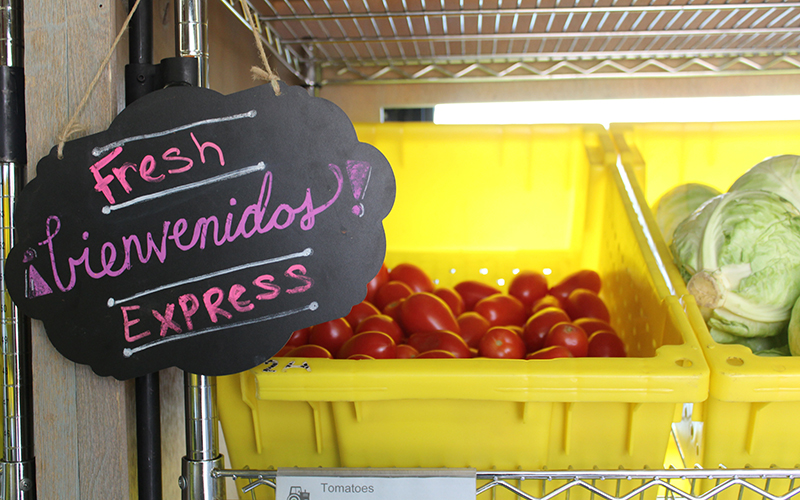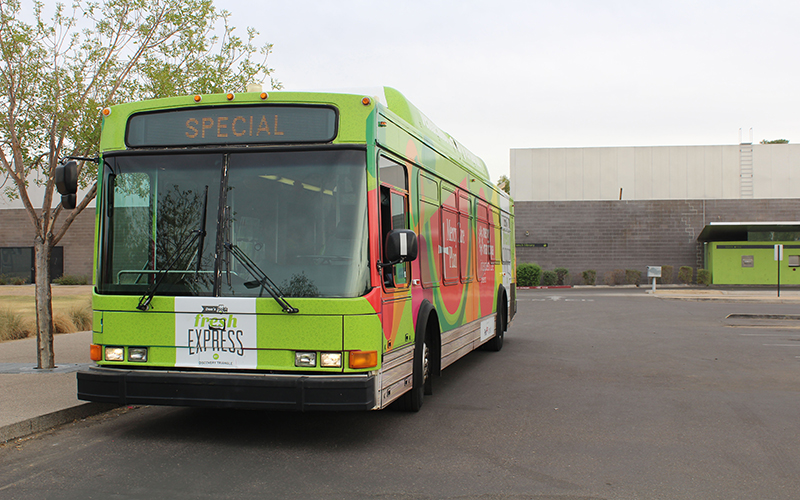PHOENIX – Elyse Guidas wants to increase access to healthy foods in low-income areas.
She works as the executive director of Fresh Express, a nonprofit that sells fruits and vegetables from a retired Valley Metro bus fitted as a mini grocery store. The truck sells the foods at cost, below market price.
It makes 20 stops a week – from senior centers to elementary schools – in communities in Phoenix and Tempe. A recent report indicated that in the three years Fresh Express has operated, it has sold more than 200,000 items and made more than 1,000 stops.
Many of the areas it serves, such as Maryvale or downtown Phoenix, have stores that sell food, but they’re often corner markets or convenience stories rather than grocery stores.
“There isn’t a lot of choice when it comes to healthy foods,” Guidas said. “We’re really in the choice business. We want to make sure customers have choices and options.”
In 2011, the Maryvale Nutrition Environment Measures Survey evaluated food accessibility in Maryvale and found residents lacked access to healthy foods. On average, food stores scored only nine out of 38 possible points on healthy food options, and the survey considered no stores to have affordable healthy food options.
Tricia Kueneman visited the Fresh Express bus when it stopped at the Palo Verde Library in west Phoenix. She and her stepson picked out two bags of produce. She said it was better than the grocery store, especially because of the lower prices and convenience.
“They only have healthy stuff in there, whereas in the grocery store, every aisle has candy, and the kids tend to go towards that,” she said.
One of the Palos Verde’s librarians said she enjoys the bus more than the grocery store.
“It’s nice because when you come to the people, you can go right there, and it’s easy for them to get to,” Dolares Bereshears said.
Guidas said it’s also crucial to educate people on the importance of healthy eating. Fresh Express also provides nutrition training and cooking demos.
A 2014 study published in the Journal of the American Medical Association Internal Medicine examined dietary trends from 1999 to 2010. Researchers determined that while overall dietary health in the U.S has improved, the wealthy eat better than the poor.


